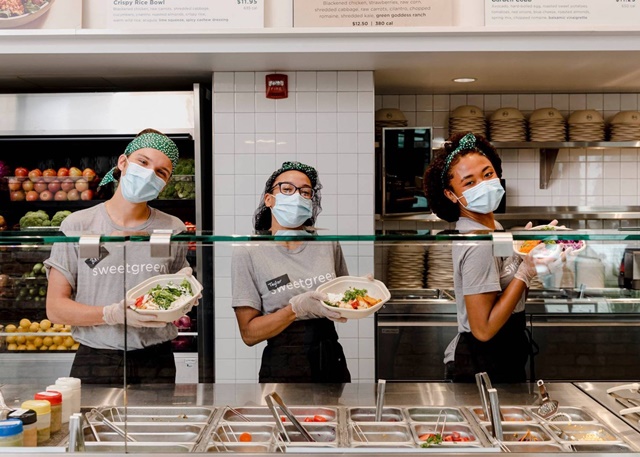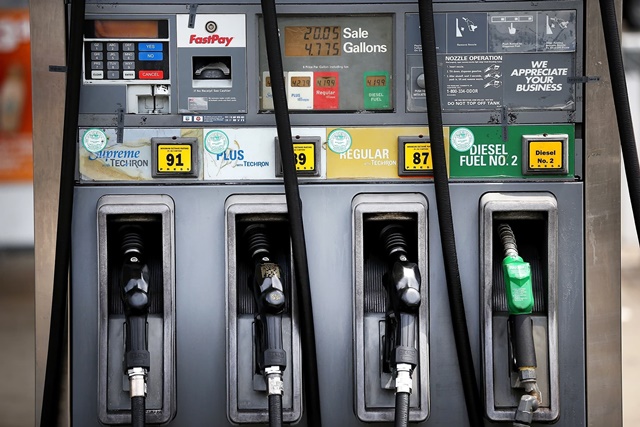‘Lunch inflation’
Millions of American workers began working remotely as the Covid-19 pandemic broke out in 2020. Right now, they’re rushing back to the office, but welcoming them is the high price of most things.
Food costs. Go. Take care of children. Rising gas prices and inflation have made returning to the office expensive for many. And it is having a direct impact on workers’ incomes, especially if their earnings growth has not kept pace with the rise in commodity prices.

Sweetgreen raises food prices in early 2021. Photo: Sweetgreen. |
Workers face rising prices for everything from their morning coffee to their lunchtime salad.
Starbucks raised the price of its products in the US in October 2021 and earlier this year, and has warned that prices can continue to rise.
“We have plans to increase the price of additional products this year,” said Kevin Johnson, CEO of Starbucks. He emphasized the cost pressure on his business.
Salad chain Sweetgreen has also increased the prices of menu items by 10% since the start of 2021, the company shared in its recent earnings report.
“Lunch inflation is completely real, things are getting more expensive,” said Kelly Yau McClay, of Potomac, Maryland. “In the past, you only had to pay $7-12 per lunch. Now, you can hardly get a decent lunch for less than 15 USD.
In April 2020, Yau McClay had just started a new job at a real estate company when the epidemic struck. She worked from home full time until October 2021. Currently, she comes to the office 3 days a week. It is estimated that, with each day going to the office, she has to spend from 30-35 USD, including lunch, coffee, snacks and parking costs.
But for many people, going back to the office gives them certain positive signals.
Sara Hill, an insurance businesswoman in Buffalo, New York, says the family’s food costs go up when everyone is at home.
“I eat more because I can go to the kitchen any time. Food costs keep going up when we’re all at home,” Hill said.
After working from home full time due to the epidemic, she now comes to the office 2 days a week.
Before the pandemic, she spent about 25-30 USD per day for breakfast and lunch at the company. But now, many of the grocery stores near where she works are closed, so she often brings food from home.
“I bring everything I can, from the day’s leftovers to a cup of noodles”
Travel expenses
Returning to the office also means commuting costs will increase.
Gasoline prices in the US recently continuously peaked. According to the American Automobile Association, the national average price of gasoline is currently at $4.6/gallon. In February 2020, this figure was only $2.44/gallon.
In Orlando, Florida, Mike Tobin bought a minivan in August 2020. At that time, it only cost him 40 USD to fill the gas tank of this car. Currently, it costs him up to 75 USD.
“The distance to my office is the furthest. Usually I just move around where I live,” shared Tobin, now working in a company that distributes gadgets.
 |
Fuel prices in the US continuously peaked. Image: Getty. |
For Hill, the soaring price of gas forced her to change her travel schedule and try to refill her tank once a week. Using high-quality gasoline, each time she fills up the tank, it costs her from 110-120 USD.
“It was crazy,” she said. She tries not to leave the house on days when she doesn’t have to go to the office.
For each day of work, Yau McClay has to pay 1.5 USD/hour for parking, equivalent to 12 USD/day. Parking prices have increased 1.5 times earlier this year.
Workers must pay more attention to their appearance. In the US, clothing prices rose 5.4% in April from a year earlier.
“With going back to the office, I also have to buy a new makeup set,” says Yau.
“You used to have to spend money on haircuts and makeup, but we hardly need them for the past two years. Yes, I’ve spent money on those, but I’ve also gotten used to living without them. Everything is much more expensive now.”
Taking care of young children
Childcare costs account for the majority of parents’ spending, and it is also gradually becoming a burden.
In 2020, the national average cost of caring for a child is $10,174, according to Child Care Aware of America.
In September 2020, Yau McClay sent his 3-year-old daughter to a full-time daycare center for $2,150 a month. “Costs go down as she gets older, but a bunch of other costs go up,” Yau said.
“Every time my kids go to class (older age group), they say, ‘Sorry, we have to increase tuition. Compared to when I started sending my daughter here, the cost hasn’t even decreased, it’s increased by $200 a month,” she said.
at Blogtuan.info – Source: cafebiz.vn – Read the original article here


